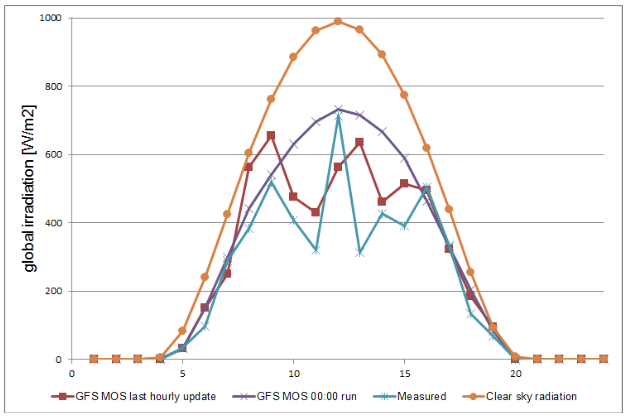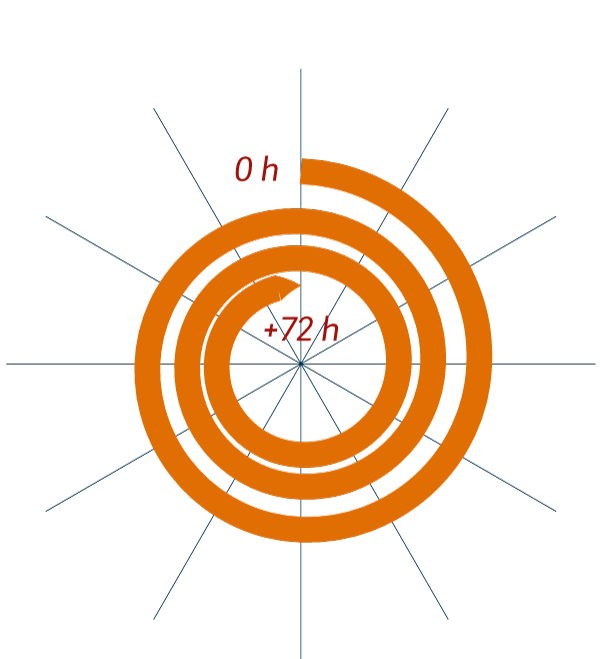SolarForecast is based on the global weather forecasting models IFS (ECMWF) and GFS. The output of these forecast models is then statistically optimised using measurement data from weather stations. This optimisation—called model output statistics MOS—allows for an irradiation forecast with high accuracy specifically for your site.
The GFS and ECMWF models are updated 4 times a day. Our MOS forecast is updated on an hourly basis based on the latest measurement data from weather stations. This significantly improves the forecast quality for the first few forecasted hours. The figure below shows a comparison of the forecast based on the 00:00 UTC run of the GFS model (available at around 4 am UTC+1), the hourly updated MOS forecasts, the measured values, and the clear sky radiation.

Comparison of day-ahead forecast and last hourly update with measured values and clear sky radiation for Bern on June 25th 2013.
In general, the accuracy of SolarForecast depends on a site's location. An internal benchmark for 17 sites in Germany and 16 sites in Switzerland showed relative root mean square errors (rel. RMSE) of 33%-43% for hourly forecast values based on the 00:00 GFS run for the first day. For southern Spain the rel. RMSE was 20% to 25%.
With this accuracy SolarForecast by Meteotest is among the most precise forecasts available on the market.
With SolarForecast Standard you get hourly values for the next 72 hours and the following parameters:
- Global radiation [W/m2]
- Air temperature [°C]
With SolarForecast Advanced you additionally get the following parameters and options:
- Direct and diffuse radiation [W/m2]
- Direct normal radiation [W/m2]
- Global radiation on the inclined plane [W/m2]
- Reference yield (for standard module and standard inverter) [Wh/kWp]
- Additional meteorological parameters such as precipitation, relative humidity, wind speed, and wind direction
- Sub-hourly forecast for any parameter with a resolution of 10, 15, 20, or 30 minutes. Sub-hourly forecasts are obtained through interpolation, taking into account the sun position with respect to a given site.
- Forecast for more than 72 hours (up to 9 days)
